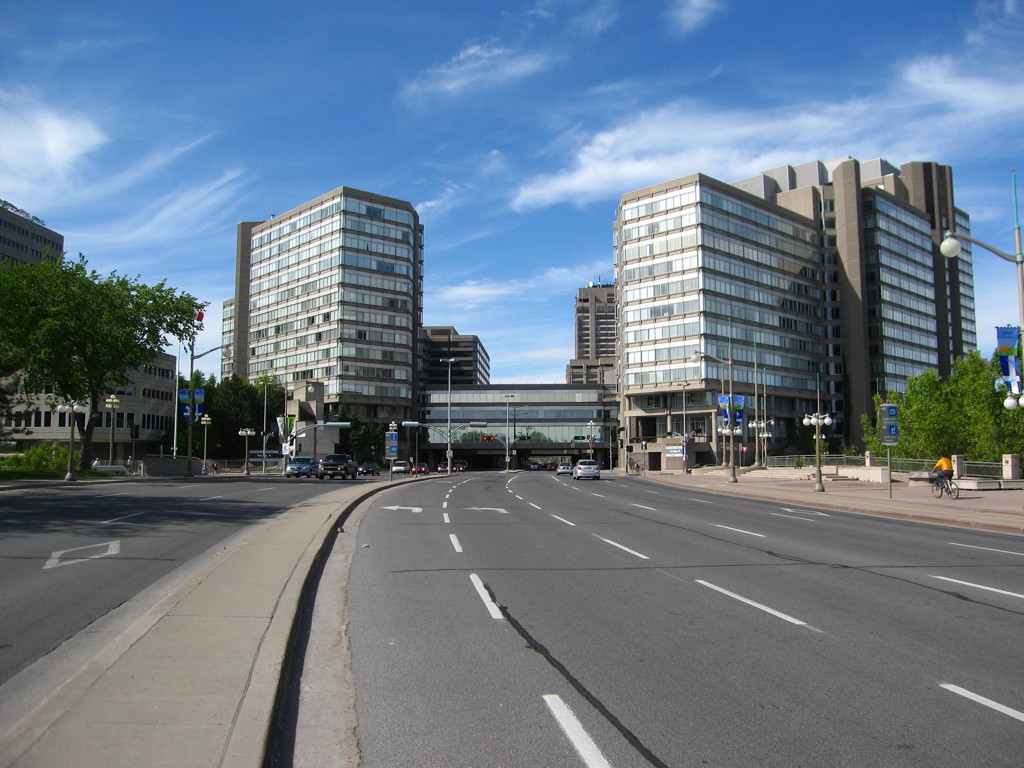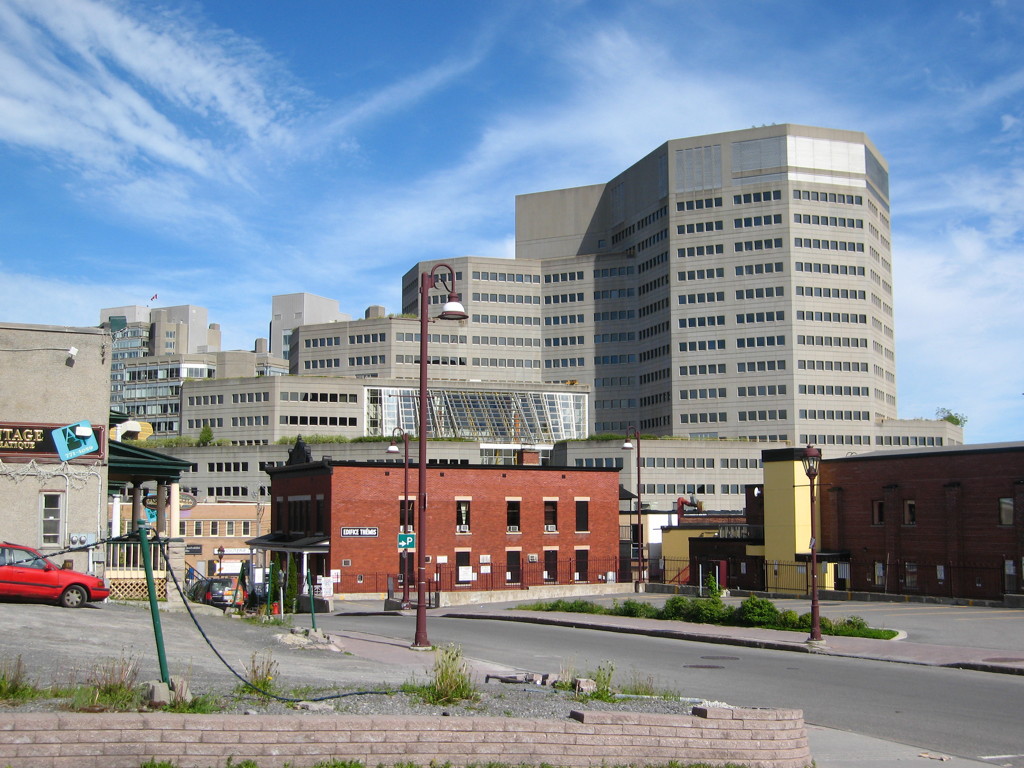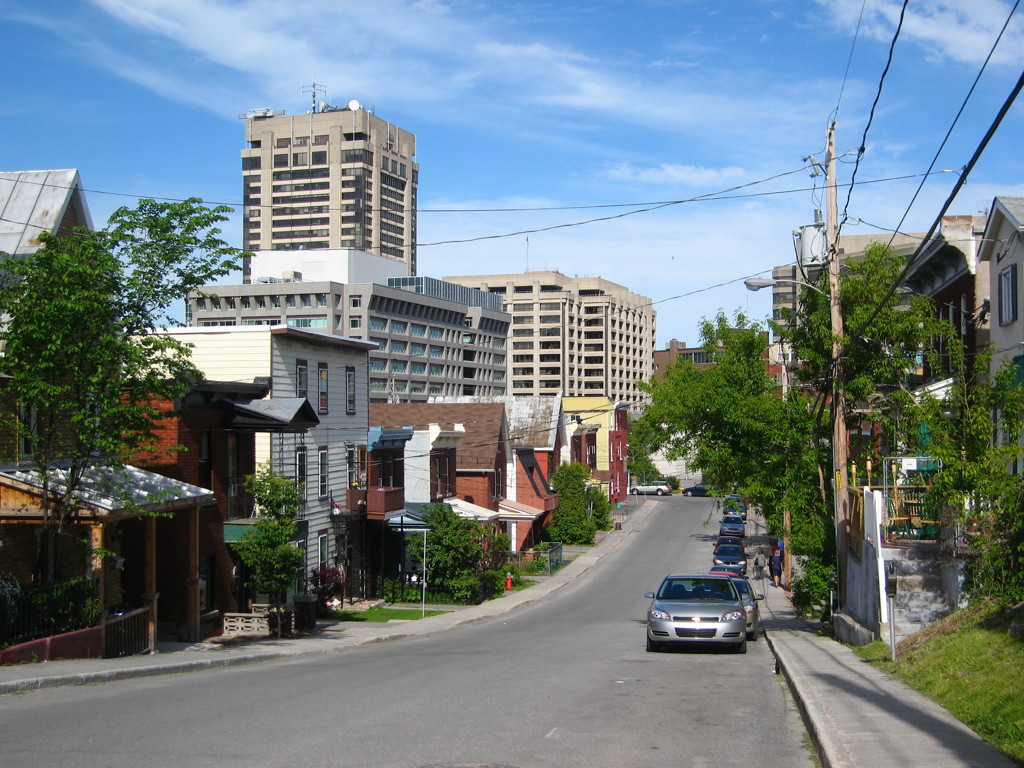"Twin horrors of postwar urban renewal and late-Modernist architecture"
During the heady 1970s, right across the river from LeBreton Flats, downtown Hull was rebuilt. Pierre Trudeau, committed to creating public jobs on the Quebec side of the river, unleashed Pubic Works and the NCC onto the unsuspecting inhabitants of Hull.
What emerged from the rubble was a textbook example of the twin horrors of postwar urban renewal and late-Modernist architecture. Brutalist concrete buildings encase a soulless mall that spans a bleak, six-lane street; they cruelly mock the former humanely scaled cityscape. Four thousand people were displaced. The new "city centre" turns a cold shoulder to the river and the parliamentary precinct across the water. Harold Kalman and John Roaf, authors of the guide book 'Exploring Ottawa' write, "The cost of this was the destruction of Hull."
Rhys Phillips, 'Great Gaffes of the National Capital Commission'
The Globe and Mail, 6 June 1998

Always the poor, working class cousin to fat cat Ottawa, Hull had accrued surprisingly few of the benefits of being part of the National Capital Region. Its main sources of employment were industrial, such as the E.B. Eddy paper plant. By the mid-60s, local politicians were clamouring for their fair share of Federal pork. Unfortunately for Hull, they were about to get it, and get it hard.
The Federal government and the NCC set out to try and correct the imbalance with a huge plan to move civil service jobs across the river. Typically, this began with expropriations and road building. In spring 1969, the NCC expropriated 15 acres of downtown Hull. The scheme: Place du Portage, an enormous office complex and shopping centre. The influx of civil servants, mainly from the other side of the river, would be supported by a new bridge, the Portage, and Boul. Maisonneuve, a six lane road that cut a swath right through the middle of the city.

Meanwhile, the province of Quebec had plans of its own. In what represents one of the NCC's most monumental failures to protect those lands of national significance they claim to be so concerned about, the NCC failed to notice the province's plan to push highway 50 through the heart of Lake Leamy Park. The highway was connected to Maisonneuve and the 5 with a massive interchange that created a permanent dead zone on the east side of the city, while Hull's main street was cut in half and mostly demolished.
With its downtown destroyed, the commercial heart of Hull shifted to Boul. St Joseph, leaving merchants in Place du Portage with empty stores in a failed mall. By 1974 they were looking at ways of getting out of their long-term leases.

Not satisfied with the monumental failure at Place du Portage, the feds expanded their program to the equally disastrous Terraces de la Chaudiere office complex a few blocks upstream.
The end result - a drastic reduction in the population of the island of Hull, from 22,000 to 9,000, and a barren streetscape of parking lots to service the civil service commuters working in their concrete tombs.
Ottawa Past and Present: Hull
Montreal Gazette: Big Brother is Moving In on Hull [7 Feb 1976]
Montreal Gazette: Six Year Road Plan to Rejuvenate Hull [8 Jan 1972]
Montreal Gazette: National capital Commission fighting to correct English-French imbalance [30 Jul 1971]
The Spacing Wire: The 1970 Architectural Concept [24 Aug 2007]
YouTube: 1965 vs 2014 LeBreton Flats - also showing downtown Hull